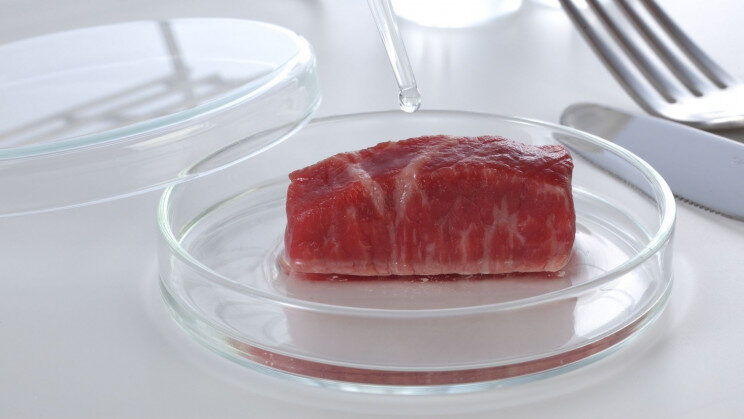Comment: This misnomer has been thoroughly debunked already - but is still being trotted out as truth by the lab-grown meat industry and their bought-and-paid-for media shills:
Lab grown meat could produce more 'damage' than the real thing, scientists warn
Since the issue has become a major problem, companies around the world have been working on green alternatives to meat products. Perhaps you might remember our previous coverage of Impossible Foods' Impossible Burgers and how they're nearly identical to regular patties and Redefine Meat's 3D-printed steaks.
One such company is Upside Foods, a cultured meat company that is headquartered in Berkley, California, and it claims that its vast 53,000-sq ft (16,154-m²) facility is the world's most advanced lab-grown meat facility, so far.
"World's most advanced cultured meat facility"
The facility is renewable powered by vats and tubes and it goes by the name: Engineering, Production, and Innovation Center, or "EPIC". Being the very first of its kind, the facility is expected to produce 50,000 lbs (22,680 kg) of commercial cultured meat.
"We're committed to completely detaching our production process from animal slaughter," the company says. "Our aim is to bring animal component-free products to market as soon as we can."
But how does the behind-the-scenes technology work? The team basically harvests cells from live animals in bioreactors and bathes them in nutrients that help grow them to actual meal sizes. "We feed the cell a range of nutrients (amino acids, sugars, trace minerals, and vitamins) normally found in food and compositionally similar to what develops organically in animal body, just in a different format," explains Upside Foods. The initial cells are obtained through "a variety of methods," the site says, including "biopsies from living animals, eggs, fishing, and recently slaughtered animals who were already a part of the food system."
What's revolutionary with Upside Foods' new facility is the fact that the company is completely transparent when it comes to business. While the company hasn't received a green light from the FDA yet, the facility is expected to open for business in January 2022. Once open, Upside Foods says that visitors can come inside the facility for tours and product testing.
While this transition to "fake" meat and/or meat products is cruelty-free, it's also greatly beneficial for the environment. Upside Foods states that "cell-cultured meat may require up to 90% less land and water, and emit up to 90% fewer greenhouse gases." With fewer carbon emissions and smaller areas required for cultured meat production, we could prevent further damage to the earth if we choose lab-grown products over the real thing.





Comment: The lab-grown meat industry is not only based on the bogus notion of creating fewer greenhouse gases that traditional cattle-rearing (which is itself part of the con of the "Climate Crisis" agenda) - but also, further, puts food production into the hands of those who would seek to control our food supply choices ala 'The Great Reset'. See also: